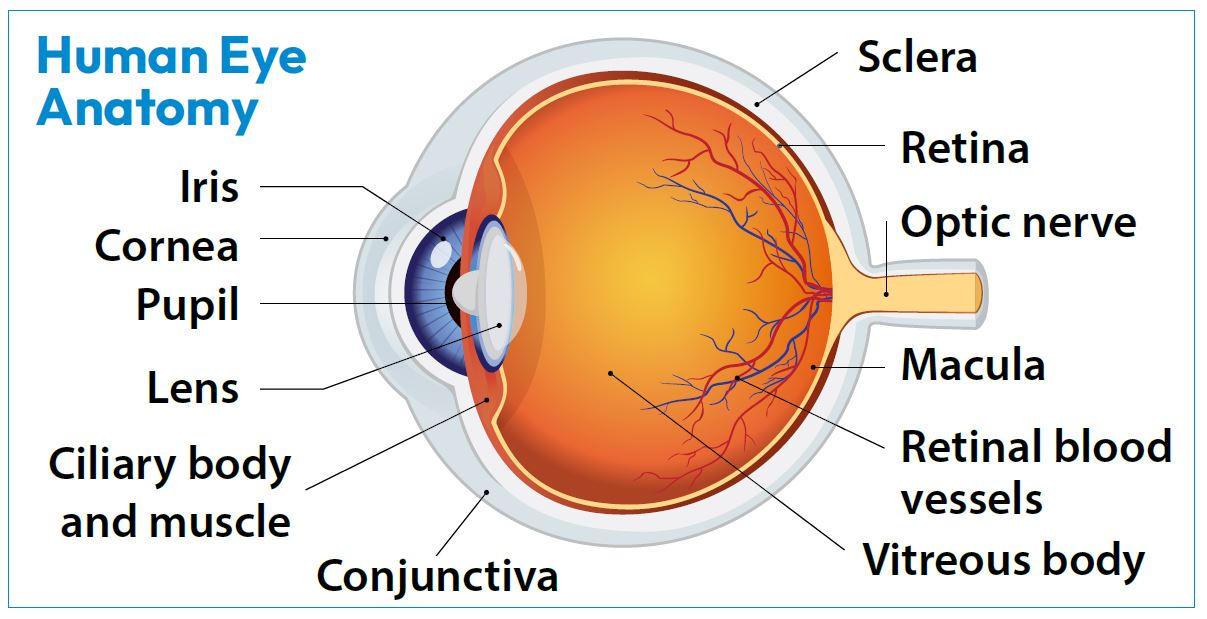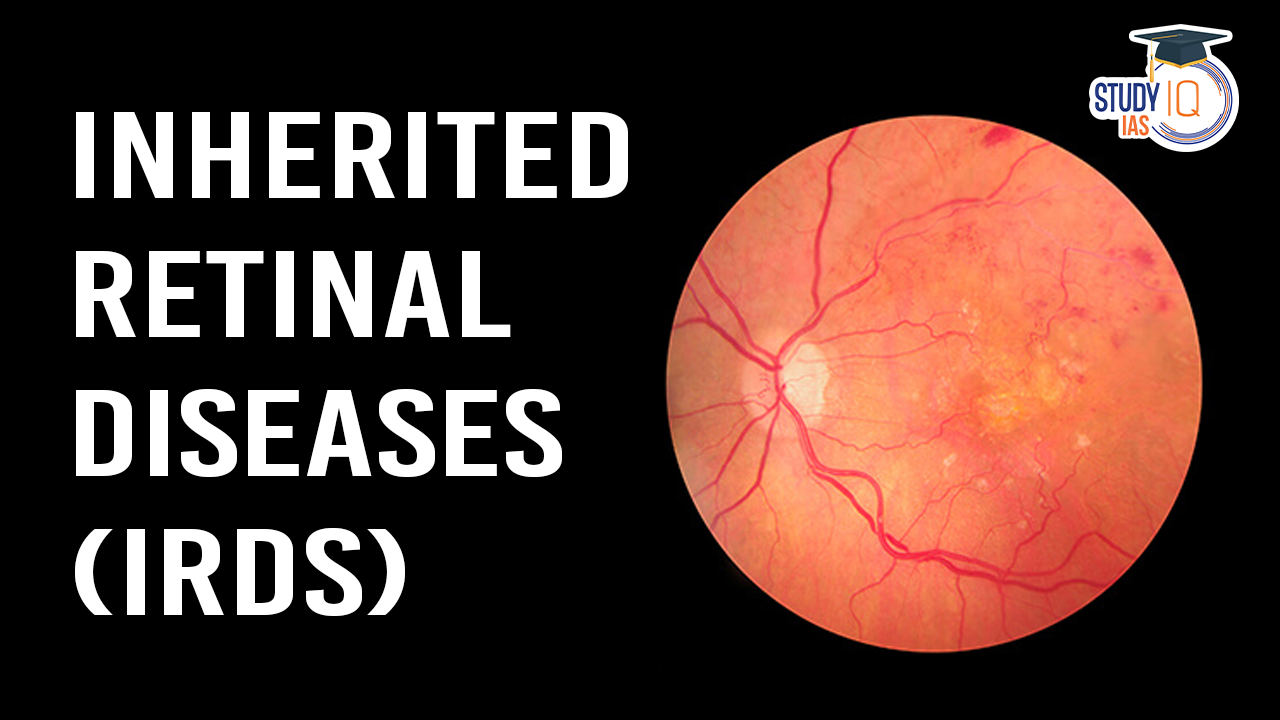Table of Contents
Inherited Retinal Diseases (IRDs)
- IRDs are a group of genetic conditions that can cause vision loss or blindness.
- They are caused by mutations in genes that control the function of the retina.
- Retinal diseases are disorders that affect the
Prevalence of IRDs
- Global cases: Estimated 5.5 million people, with a prevalence rate of 1 in 3,450.
- India (High prevalence): 1 in 372 in rural South India & 1 in 930 in urban South India.
Retina
It is a light-sensitive layer of tissue at the back of the eye that converts images into electrical signals that the brain can process.
How it works
- Light passes through the eye’s lens and focuses on the retina.
- Photoreceptor cells in the retina convert light into coded signals.
- The retina sends these signals along the optic nerve to the brain.
- The brain decodes the signals and interprets them as vision.

Types of Inherited Retinal Diseases (IRDs)
There are different types of Retinal diseases, each has distinct symptoms and progresses differently. The most common ones are:
1. Retinitis Pigmentosa (RP)
- Primarily leads to night blindness followed by an incapacity to see things at the side of one’s eye, by affecting the rod cells in the retina.
- One of the most common IRDs.
2. Stargardt Disease
- A condition that causes progressive central vision loss affects the macula.
- Most of the time, it starts in child or young adulthood and worsens over time.
- Caused by mutations in the ABCA4 gene.
3. Leber Congenital Amaurosis (LCA)
- Considered to be one of the most severe forms of IRDs, causing loss of vision in infancy.
- It is characterized by dysfunction of both rod and cone photoreceptors in the retina.
- Extreme hyperopia (far-sightedness) and nystagmus (involuntary movement of the eyes) may be seen in some patients.
4. Cone-Rod Dystrophy (CRD)
- In moderate to severe cases, patients lose their ability to see color and have central vision impairment, photophobia is common symptom among patients.
- It is more severe than usual rod-cone dystrophy.
5. Choroideremia
- C. Choroideremia A degenerative the disease of the eye that is characterized by progressive vision loss due to the degeneration of the choroid and retina. His X linked pattern and mostly affects the males.
Symptoms Of IRDs
Depending on the unique condition the patient may suffer from, its signs may include the following:
- Nyctalopia (inability to see in the dark)
- Scopic vision loss (tunnel vision)
- Central vision loss (blurriness or distortion of vision)
- Dyschromatopsia
- Photophobia
- Nystagmus (involuntary eye movements)
Most IRDs steadily progress with time, making it important to treat timely.


 Satellite Internet, Working and Associat...
Satellite Internet, Working and Associat...
 India’s Undersea Cable, Expansion, Sig...
India’s Undersea Cable, Expansion, Sig...
 Disinformation Threat in India, Need and...
Disinformation Threat in India, Need and...





















